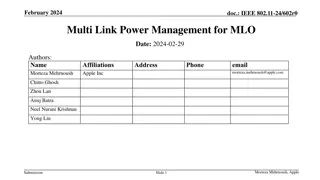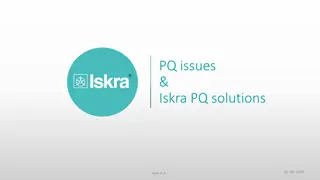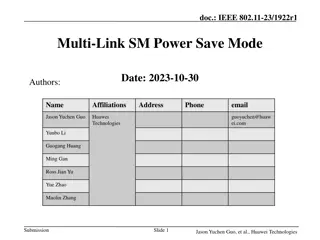
Understanding Blood Borne Pathogens and Prevention
Learn about common blood borne pathogens such as HIV, Hepatitis B, and Hepatitis C, how they can be transmitted at work, and ways to prevent infection. Discover the risks associated with administering first aid, cleaning restrooms, and encountering bodily fluids. Understand the importance of vaccination and proper precautions to protect against these diseases.
Download Presentation

Please find below an Image/Link to download the presentation.
The content on the website is provided AS IS for your information and personal use only. It may not be sold, licensed, or shared on other websites without obtaining consent from the author. If you encounter any issues during the download, it is possible that the publisher has removed the file from their server.
You are allowed to download the files provided on this website for personal or commercial use, subject to the condition that they are used lawfully. All files are the property of their respective owners.
The content on the website is provided AS IS for your information and personal use only. It may not be sold, licensed, or shared on other websites without obtaining consent from the author.
E N D
Presentation Transcript
Blood Borne Pathogens 29 CFR 1910.1030 Could you contact a disease at work? Administering first aid? Cleaning a restroom? Using a tool covered with dried blood? A co-worker sneezes on you?
Common Blood borne Pathogens OSHA defines blood borne pathogens as pathogenic microorganisms present in human blood that can lead to diseases. Human Immunodeficiency Virus (HIV) Hepatitis B (HBV) Hepatitis C (HCV)
Human Immunodeficiency Virus (HIV) HIV is the virus that leads to AIDS HIV depletes the immune system HIV does not survive well outside the body May be found in low quantities in saliva, tears from some AIDS patients. Not found in sweat. Contact with saliva, tears or sweat has never been shown to result in transmission of HIV.
Hepatitis B (HBV) Over 1 million Americans are chronically infected Symptoms include: jaundice, fatigue, abdominal pain, loss of appetite, nausea and vomiting May lead to chronic liver disease, liver cancer and death Vaccination available since 1982 HBV can survive for up to one week in dried blood
Hepatitis B Vaccination Endorsed by the medical communities Series of three injections Shown to be safe for infants, children and adults Offered to all potentially exposed employees Provided at no cost to employees Declination/Acceptance form
Hepatitis C (HCV) Hepatitis C is the most common chronic blood borne infection in the United States Symptoms include: jaundice, fatigue, abdominal pain, loss of appetite, intermittent nausea, vomiting Can survive in dried blood for up to 3 weeks May lead to chronic liver disease and death No known vaccine
Potentially Infectious Bodily Fluids Blood Saliva, vomit, urine Semen or vaginal secretions Skin, tissue, cell cultures Other body fluids
Potential Transmission Contact with another persons blood or bodily fluid that may contain blood. Contact with mucous membranes: eyes, mouth, nose Contact with non-intact skin Contact with contaminated sharps/needles
Potential Exposure Industrial accident Administering first aid Post accident cleanup Cleanup of bodily fluids Janitorial or maintenance work
Exposure Control Plan (ECP) Potential exposure determination Follow safe work practices Decontamination of equipment Use proper personal protective equipment (PPE) Proper handling of bio waste and use of labels and signs Follow training and recordkeeping requirements
Who Must be Trained All employees with occupational exposure to blood or other potentially infectious material (OPIM) Employees who are trained in first aid and CPR
Universal Precautions Treat all blood and bodily fluids as if they are contaminated. Perform proper clean up and decontamination Always wear appropriate PPE such as vinyl or nitrile gloves, gown or apron when handling any type of bodily fluid.
Protective Equipment Bleeding control Nitrile or vinyl gloves Spurting blood Nitrile or vinyl gloves, protective clothing such as smocks or aprons, respiratory mask, eye and face protection such as safety glasses or face shields Post accident clean up or janitorial work use nitrile or vinyl gloves.
Decontamination Solution of cup of bleach per gallon of water Properly dispose of contaminated PPE, towels or rags
Safe Work Practices Remove contaminated PPE or clothing as soon as possible Clean and disinfect contaminated equipment and work surfaces Thoroughly wash up immediately after exposure Properly dispose of contaminated items Avoid cross contamination
Regulated Medical Waste Liquid or semi liquid blood or OPIM (other potentially infectious materials) Contaminated items that would release blood or OPIM when compressed Contaminated sharps
Labels and Signs Labels must include the universal biohazard symbol, and the term Biohazard must be attached to: - Containers of regulated biohazard waste - Refrigerators or freezers containing blood or OPIM - Containers used to store, transport, or ship blood or OPIM
Sharps Disposal Containers Use single use supplies, such as needles, whenever possible Sharps containers must be closable, puncture resistant, leak proof and labeled with a biohazard sign Dispose containers when 2/3 full at an appropriate medical waste site
Exposure Incident A specific incident of contact with potentially infectious bodily fluid If there are no infiltrations of mucous membranes or open skin surfaces, it is not considered an occupational exposure Report all accidents involving blood or bodily fluids Post exposure medical evaluations are offered
Post-exposure Evaluation Confidential medical evaluation Document route of exposure Identify the source individual Test source individuals blood (with individuals consent) Provide results to exposed employee
Recordkeeping Medical records include: Hepatitis B vaccination status Post exposure evaluation and follow-up results Training records include: Training dates Contents of the training
Summary Follow universal precautions Use PPE and follow safe work practices Perform decontamination Report all exposure incidents






















